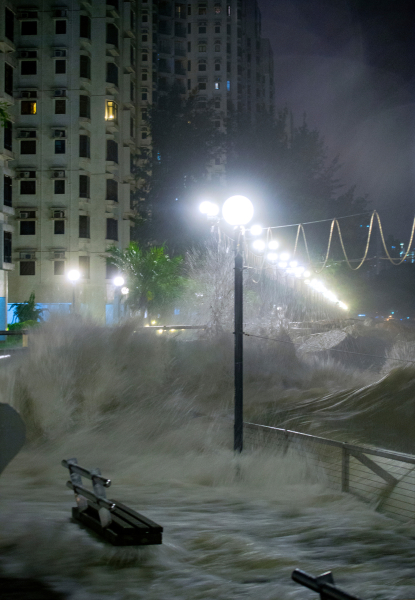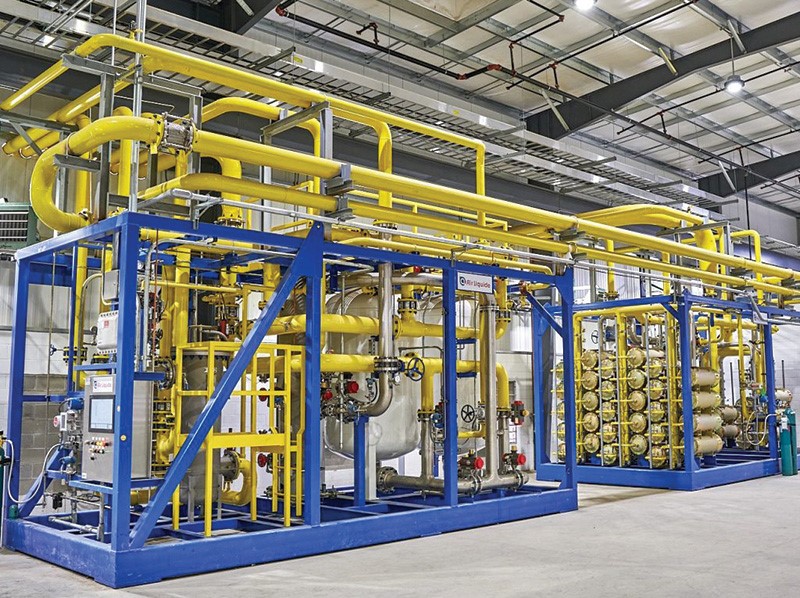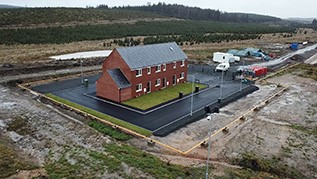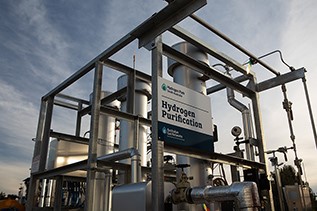Weathering the climate-change storm to a carbon-free future
Climate change is not a distant threat. It’s a “now” threat.
Extreme weather events are rising in frequency and intensity and CK Hutchison companies are feeling the heat. And the waves. And the floods. In response, they are enacting adaptive strategies to deal with extreme weather events.
To mitigate the impact of climate change caused by the release of greenhouse gases (GHGs), many CKHH companies are leading the charge in the hydrogen revolution. Hydrogen fuel emits only water and oxygen – beneficial by-products for people and nature. However, much of hydrogen technology is in the development phase – past pure research but still not ready for all-encompassing deployment across the global economy. In the meantime, other options such as biomethane, solar and wind are part of the story to provide power. On day 2 of the Global Climate Action Conference, Charles Tsai, CEO and Executive Director of Power Assets, led a host of CEOs driving an energy transition in their respective spheres and discovering the new opportunities that lie ahead.
Heat waves. Flooding. Convective winds. CKHH companies are enacting adaptive strategies to deal with extreme weather events.
The impact of climate change is upon us
It isn’t your imagination; storms are bigger and stronger than they used to be. Warmer air holds more moisture and more energy; that means higher waves and wind speeds when storms strike.
Hong Kong is built to withstand even the strongest typhoons. But monsters like the 2018 super typhoon Mangkhut leave a swath of destruction in their path. Wind speeds hit 250km/h and storm surges were over 2.3m high. In the wake of Manghkut, HK Electric formed an internal taskforce to deal with the wind damage and flooding of power facilities. The main power plant has flood protection walls 2m high, but gaps in these walls which allow for vehicular access must be closed when severe or super typhoons attack Hong Kong. New facilities require walls to be built up to 5m above the existing sea level to prepare for bigger surges and to cater for the projected rise in sea level due to global warming. Current facilities now have HK Electric-designed flood gates and two-stage flooding alert systems. The storms and flooding will come; HK Electric will be ready.
SA Power Networks (SAPN) is also seeing more powerful storms with intense microbursts and severe convective winds (caused by local temperature differences) triggering equipment damage, prolonged customer power outages and increased costs for repair. Lower overall rainfall is expected, but extreme rainfall events will be much more frequent. In November 2022, South Australia was hit with storms with wind speeds of 106km/h, over 423,000 lightning strikes and which severed an interstate connecting cable. The impacts were felt by 163,000 customers; over 3,000 people were completely disconnected to avoid further damage to their properties.


And when it rains, it floods. The UK was especially battered in late 2021 and all of 2022. Three “named storms” hit the country in four days, resulting in 720,000 UK Power Networks (UKPN) customers losing power for up to five days – even though 90% had their power back within 24 hours. The company is responding with a comprehensive strategy of extreme weather and flood mitigation plans to mitigate the impact of severe weather. Aeroplane-borne lasers are being used to identify vulnerable trees that could fall and hurt people or damage cables in storms. Equipment monitoring and replacement schedules are being advanced.
Even water companies like Northumbrian Water have to cope with too much water in the wrong place at the wrong time. The environment and customers’ properties can be severely damaged when storm waters cause sewage to back up and drains become overwhelmed, which happens often in the UK. Less frequent but not unheard of is flooding of the “wash your house and car away” variety. Water companies are deploying a range of “hard engineering” solutions (think big pipes and lots of concrete) and “nature-based solutions” (using plants as water buffers) to manage floodwaters. Public behaviour is key; the “Bin the Wipe” campaign aims to keep the wet wipes out of waterways and prevent up to 60% of sewage blockages in North East England.
And when the rain isn’t falling, the bush is burning. South Australia has very hot and dry summers, but increasingly extreme heat events are causing strain on the network and creating the conditions that result in more frequent and more intense bushfires. Damage to SAPN’s power network equipment and overhead cables can cause fires to start in extreme bushfire conditions. Aggravating the situation, fires can also block access and hamper repairs. Extensive prevention and management programmes are costly but preferable to sustaining massive damage. Exercises, training, vegetation clearance and asset patrols are part of the programme of vigilance. While coping with extreme weather, the same companies are shifting to greener fuels so that they aren’t contributing to making the problem worse.
While coping with extreme weather, the same companies are shifting to greener fuels so that they aren’t contributing to making the problem worse.

Renewable natural gas – it’s a thing
Biomethane, known as renewable natural gas (RNG), is one option. EDL makes good use of the methane generated by waste rotting in landfills. Sometimes the biogas is tapped out of old landfills. Raw biogas can be transmitted to plants for industrial use or processed to create biomethane (aka RNG). It can then be used as an alternative to fossil fuel-derived natural gas. Another alternative is to convert it on-site into electricity and distribute it through a traditional grid.
The company has over 60 biogas facilities in Australia, the UK, Canada and the US. EDL is a top-10 landfill gas producer in the US, where it aims to generate 7 petajoules of RNG/biomethane by mid-2023.
EDL also builds, owns and operates hybrid power stations that use solar photovoltaics (PVs), windmills and batteries to serve companies and communities in remote areas, especially in the Australian Outback. This helps reduce the use of trucked-in diesel.
Another approach is the enablement of residential customer solar by Victoria Power Networks (VPN) and SAPN. Customers can install their own solar PVs and feed energy back into the grid. VPN is increasing its capacity to enable greater levels of local renewable energy to flow into the distribution network from rooftop solar systems.

The future is hydrogen
Much stock is being put into a future of energy stored as hydrogen. Northern Gas Networks has a wide range of test projects undertaken in partnership with local universities and other companies. They are adding hydrogen into gas for home heating and cooking, slowly increasing the hydrogen content to test for safety and compatibility with current infrastructure and end usage. The target is to deliver 100% hydrogen – without the carbon emissions – into 4.5 million homes by 2037.
Australian Gas Infrastructure Group (AGIG) is also demonstrating how hydrogen gas, blended with traditional natural gas, can be supplied to customers via their existing gas networks. They have built Hydrogen Parks all code-named “HyP [Location]”, such as HyP South Australia or HyP Gladstone, bringing an element of local pride to the local communities that host them. The hydrogen is generated using wind and solar power. More are coming across the country and AGIG is aiming to supply 100% hydrogen (ie, no gas) to all customers by 2050.
Wales & West Utilities is developing plans for a hydrogen highway.
Wales & West Utilities is developing plans for a hydrogen highway to connect production and users in South Wales. HyLine Cymru’s pipeline (ie, Hydrogen line Wales) will transport 100% hydrogen. It will connect a range of producers (potentially including offshore wind power) to industrial plants. It will also play a role in blending hydrogen with natural gas and converting lower pressure networks to send hydrogen to homes for heating.
UK Rails is partnering with Alstom, a leading train manufacturer and maintenance provider, to explore the technical and commercial feasibility of building a brand-new hydrogen fleet of trains. Hydrogen-powered trains could fill a gap and provide clean power where the rails can’t be electrified.
While these measures can’t stop all of the climate change that is upon us, they can dramatically reduce the emission of GHGs in a future where the demand for energy is only going to rise. At the Conference, CKHH companies showed that they are ready to cope with the disasters of the day and see a carbon-free light at the end of the climate-change tunnel.
